Boats are the stuff that dreams are made of—sometimes of dreams recaptured, in places unexpected. Such is the case with the Sea Knight, a graceful 17′ retro cabin cruiser, a boat that Bill White claims, “anyone comfortable with basic tools can build in the space of a two-car garage.” He completed his boat in less than two years with a materials cost of approximately $6,000.
For Bill, the Sea Knight’s creation was truly a dream reborn and rebuilt. He had once owned, loved, and lost a nearly identical boat back in the ’60s: a 1956 Scottie Craft cruiser. While towing the boat on a trailer, a nasty jolt from a sneaky bad patch of roadway “hammered a trailer roller through the hull,” Bill said. She sank upon launching at a local boat ramp. This painful image would remain with him and, in 2008, become the catalyst for his looking for a way to replace her. Bill would fill the void by completing the Sea Knight, a design first featured in Popular Mechanics magazine in 1957 and now offered by Glen-L.
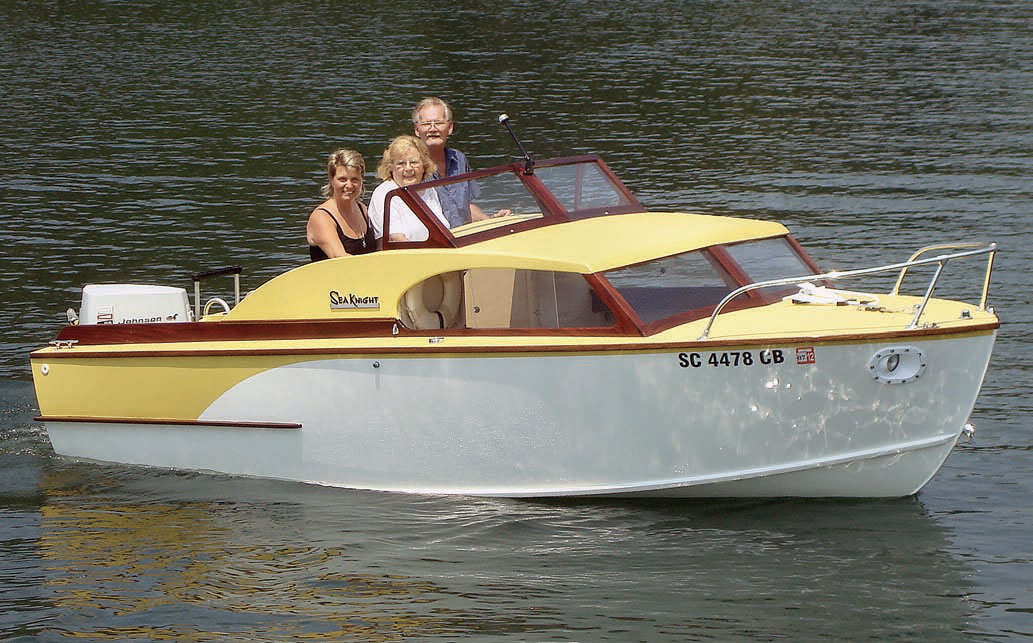 Chuck Black
Chuck BlackWith a 17′ length overall (LOA) and a 7′ 2″ beam, the Glen-L Sea Knight is ideal for trailering. She has plenty of freeboard and a modified 30-degree V-hull capable of high-speed planing and dealing with moderate seas. She packs in a lot in a small amount of space.
I got my first glimpse of the Sea Knight after driving inland from the South Carolina coast. Bill’s adopted hometown of Edgefield is in the middle of the state near Lake Strom Thurmond, a huge reservoir with 1,200 miles of shoreline. As I made my way to their house, Bill and his wife, Hazeline, greeted me heartily. There in the driveway sat the Sea Knight—her fresh paint glistening. A little kissing cousin to the Chris-Craft cabin cruisers of the late 1950s, she brought back memories of my own youth.
The Sea Knight has attractive ’57-vintage curves. The design buzzword of that period was “streamlining.” At the time, the nation was fascinated with the curves and fins found on rockets, and these were emulated and applied to boats as well as cars.
While Glen-L’s plans for the Sea Knight are comprehensive, not every builder will be able to attain the standard seen here. Bill is a professional restorer of vintage cars, a skill he learned from his father. His remarkable workmanship is evident in the Sea Knight’s construction and finish.
As we started to walk around her, I noticed that she has lights mounted in recessed, sealed housings on both sides that are reminiscent of car headlights from the 1950s. Bill had recycled them from another boat. I was also grabbed by the polished aluminum bow rail and chromed brass deck fittings. He had acquired these via eBay.
Bill’s finishwork throughout the Sea Knight is ultra-smooth. To achieve it he used a professional automotive paint sprayer to apply a two-part polyurethane enamel of white and light yellow in a two-tone, curved pattern. He prefers a two-part automotive polyurethane because he feels that it has the same integrity as marine enamels while being less expensive.
The light yellow finish that continues on to the deck and cabintop looks just like textured paint—but isn’t. Based on his years of experience with autos, Bill tinted a spray-on material called Raptor Liner, which is similar to a pickup truck bed liner. The result is a thin coating that appears as a painted surface, yet has incredible wear and traction characteristics.
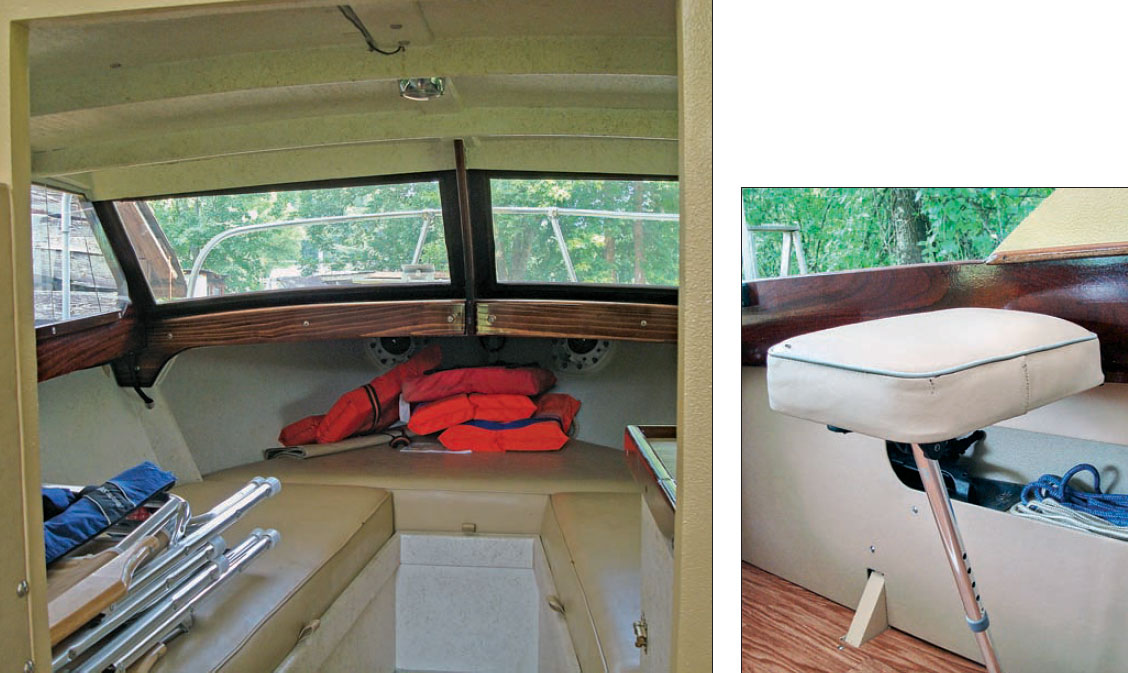 Chuck Black
Chuck BlackThe modest cabin has 4′ 7″ of headroom. It can sleep two in comfort or provide quick refuge from a squall. Like many amenities on board, the helmsman’s chair is compact and easy to stow.
The cabin is topped with a beautiful mahogany wind-shield. The windowpanes, including those of the sliding windows on the cabinhouse sides, are of Plexiglas. Aft of each of these two windows is a Sea Knight nameplate. Bill carefully researched the proper font for the stylized letters to ensure they were appropriate to the period, then cut the nameplates from ¼″ aluminum plate. This extraordinary finishwork suggests an equally well-built hull structure and interior—and I was hungry for a look below. While Bill outfitted the boat with a lot of personal accoutrements, he stuck to the plans when building the hull.
After putting together the strongback and frame setup, he cut hull and cabin panels from 4′ × 8′ sheets of 3⁄8″ meranti marine plywood, and the bulkheads from 3⁄4″ sheets of the same material. All of the pan-els were secured to their bulkheads with stainless-steel screws and strengthened with epoxy fillets. The entire hull was then sheathed inside and out with epoxy and fiberglass for waterproofing and added strength. This results in a hull that is extremely strong and relatively light, at 700 lbs gross weight.
When it came to outfitting the interior, the plans provided good guidance but left room for Bill’s imagination. The plans call for bunks that provide room for storage below. Bill made the bunk cushions himself. Glen-L claims that it is possible to install a small head and galley stove as well, but Bill believes they would have really cramped the cabin. He decided against both appliances, but if this were my boat, I think I would add a portable stove and portapotti.
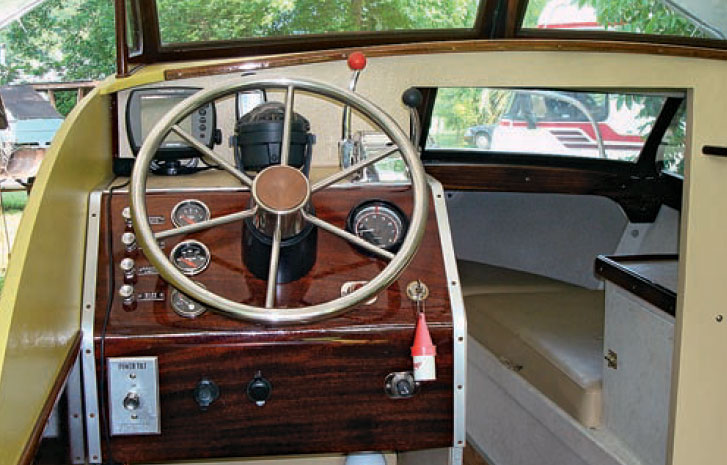 Chuck Black
Chuck BlackThe helm is decked out in period gauges, switches, signage and chrome, much of it found through Internet searches.
In the cockpit, Bill installed a chromed steering wheel, and a mahogany panel for the instruments and chromed pull switches with their engraved black-and-white labels. There’s also a chromed gear shift and throttle lever.
At the aft end of the cockpit there is plenty of storage space on each side of the motorwell for the outboard. Bill told me that the Sea Knight was capable of utilizing a range of outboards from 20 hp on up to 85; he has a selection of outboards to run on the Sea Knight. For our ride on the lake he chose a 1972 Homelite 85, which he had rebuilt himself.
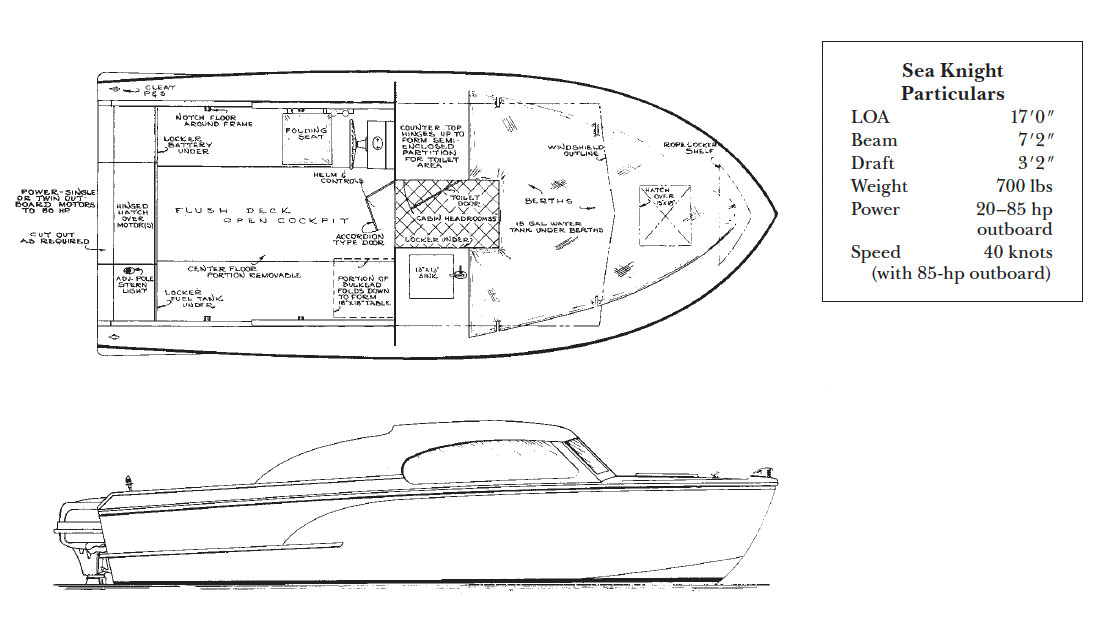
Sea Knight’s arrangement plan shows a large cockpit (relative to her size) with the helm to port and a folding table to starboard and a minimal overnight cabin below. Her outboard profile is reminiscent of automobile styling from the 1950s.
Lake Strom Thurmond, where we launched Bill’s Sea Knight, is part of a waterway that runs from the northern border of South Carolina all the way south to the Savannah River, which terminates at the Atlantic Ocean at the South Carolina–Georgia border.
We launched the Sea Knight from her trailer at one of the lake’s many yacht clubs and found ourselves in a haven of runabouts and houseboats, nearly all of them fiber-glass. Viewing a wooden boat launching in these parts is a rare sight and a real treat to the locals, too.
On my test ride, the Sea Knight quickly got up on plane. The boat is capable and feels stable—even in tight turns. On a straight course at half throttle she cruised comfortably at 20 knots. At full throttle she skimmed the surface at 40. She is equipped with a 10-gallon built-in fuel tank to help her go the distance.
The Sea Knight is a success, being a stylish pocket cabin cruiser for inland waters. She is an affordable, nimble, and eye-pleasing weekender. Her plans are comprehensive, making her relatively simple to build. All in all, she’s a great craft for family adventures, or, as Bill might say, she’s “the stuff that dreams are made of.”![]()
Plans for the Sea Knight are available from Glen-L Marine: 562–630–6258.
Check Out These Other Glen-L Boat Profiles
From powerboats like the Sea Knight to a handsome daysailer, here are a few other boats from Glen-L profiled by Small Boats.
Glen-L 15: A sloop-rigged daysailer
Glen-L Zip: A twin-cockpit runabout
Glen-L Utility: Classic 1950s style in a boat that’s simple to build, a joy to use
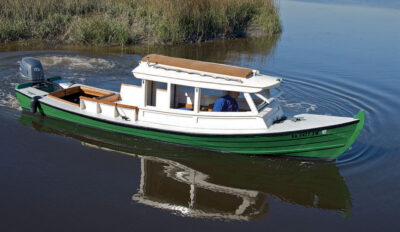
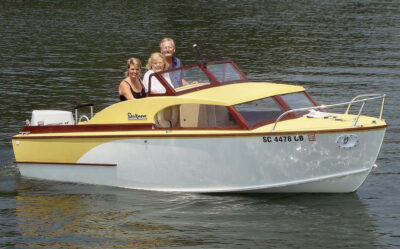
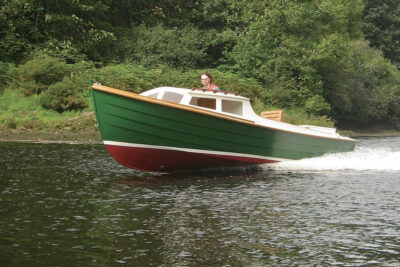
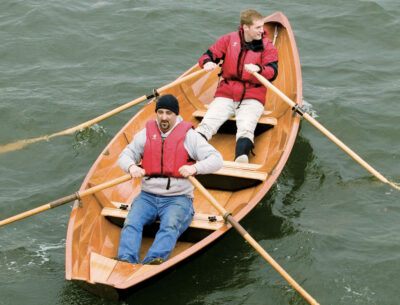
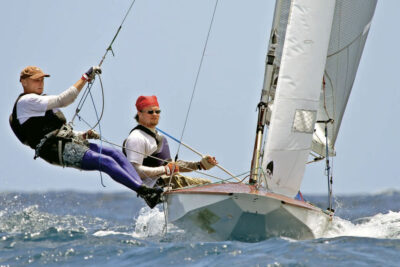
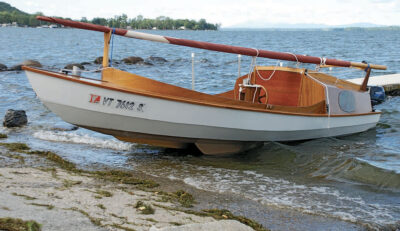
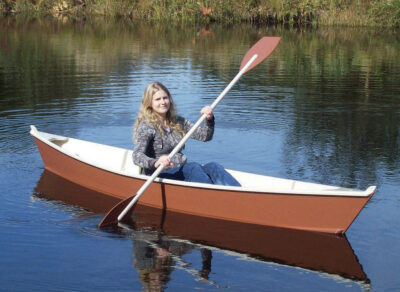
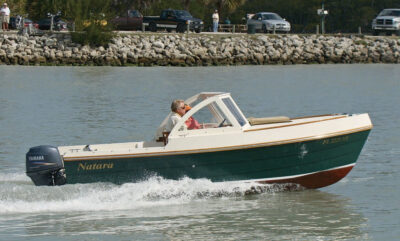
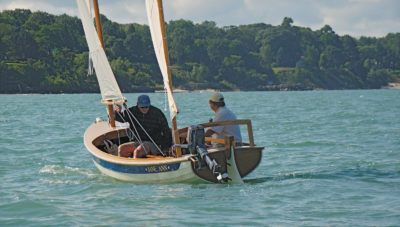
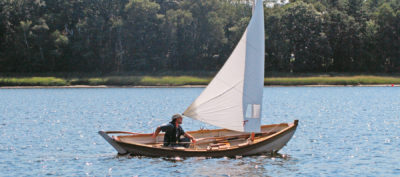
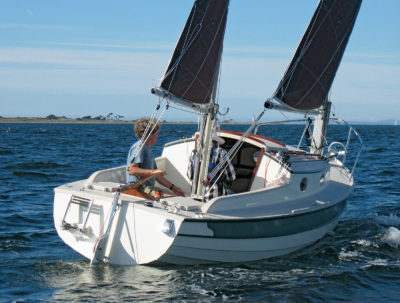
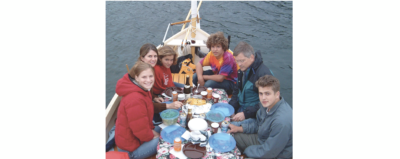
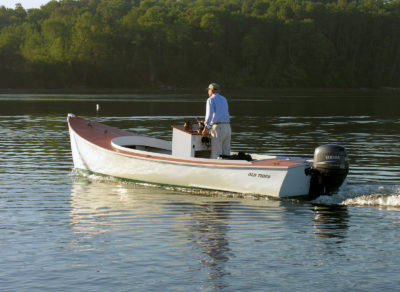
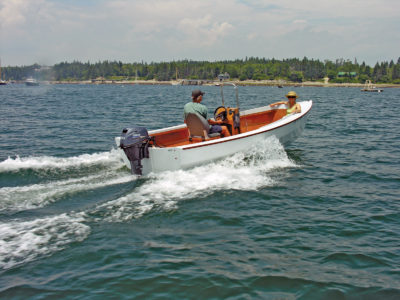
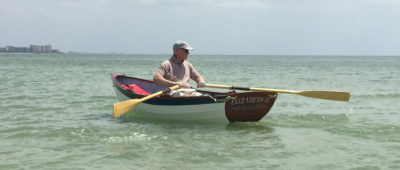
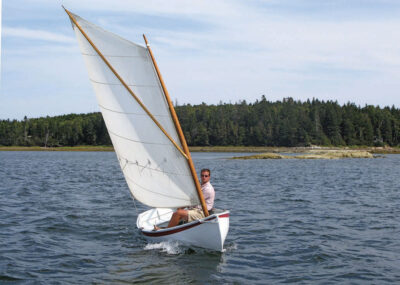

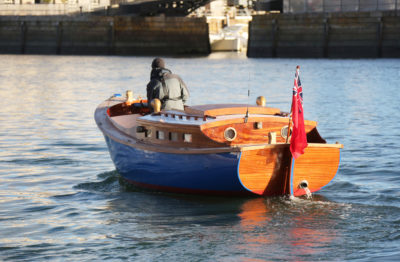
Join The Conversation
We welcome your comments about this article. If you’d like to include a photo or a video with your comment, please email the file or link.